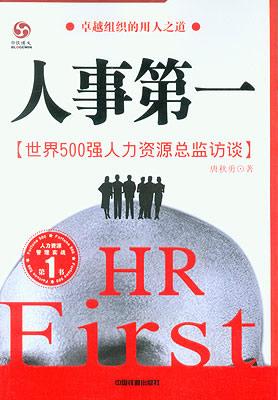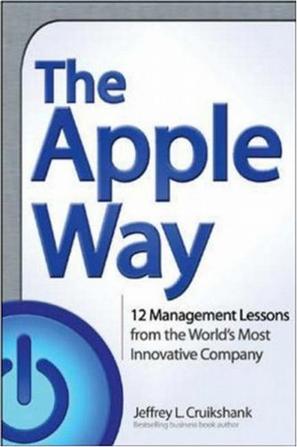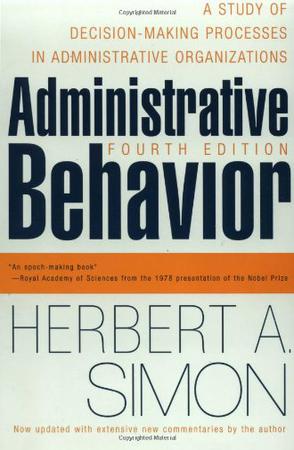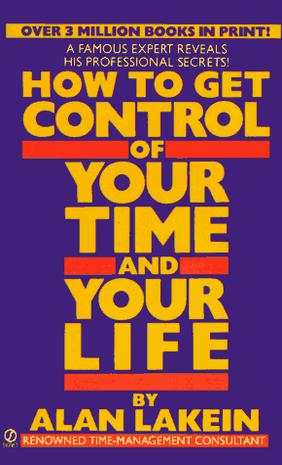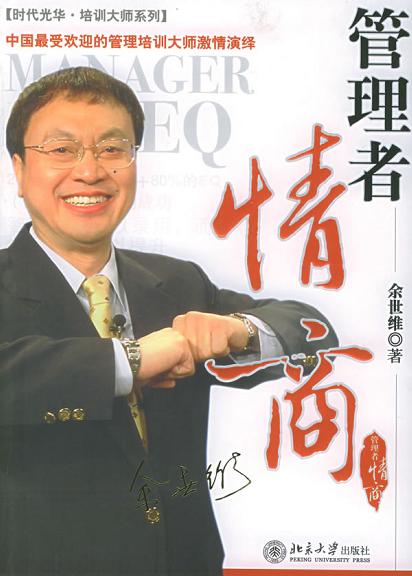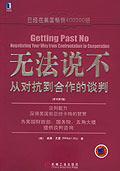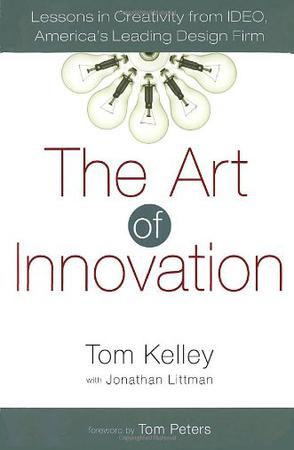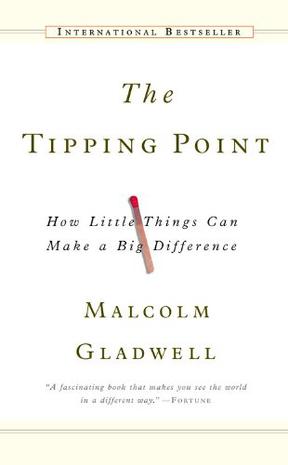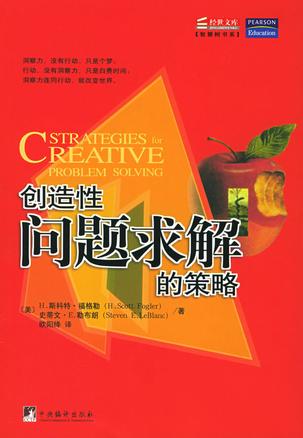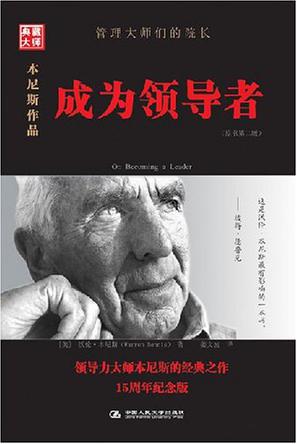欢迎来到相识电子书!
标签:管理
-
人事第一
本书通过“HR管理世界”拜访数十位全球500强企业的人力资源副总裁、总监、世界级的企业家和管理大师,来探讨全球顶尖公司如何进行战略规划,组织设计以及人力资源配置。同时,还深入这些全球500强企业的幕后,为读者提示了它们是怎样迎接当今最严峻的管理挑战,并为所有企业提供了适用的解决方案。 它是一本企业人力资源管理策略规划的实战手册,读者可根据这些被访谈者所叙述的新见解、新方法、新思路,来按图索骥检视自己企业的策略规划与组织变革,并可藉此获得拨云见月的心得…… -
The Apple Way
在线阅读本书 Book Description With more than 10 million iPods sold to date, an unprecedented 250 percent stock value increase in just one year, and a net income increase of 530 percent, Apple has skyrocketed to dizzying heights of success. But the ride has not always been smooth, and the company’s legendary cofounder, Steve Jobs, has seen it all. From its early unveiling of the unreliable, clunky $9,995 “Lisa” computer in 1983, to its recent staggeringly successful breakthrough product, the iPod, this company has not only reinvented itself many times over, but it also has revolutionized the entire computer industry. What are its secrets? Find out in The Apple Way. In today’s fast-moving technology world, Apple has learned--often through hard-won wisdom--that you can’t do it by yourself, no matter how smart you are. Markets move quickly, technologies grow complex, and too many intelligent people invest too much time and money in innovation. The Apple Way reveals the secrets and management principles that keep Apple ahead of the curve--including innovative product development, cutting-edge marketing strategies, sleek design and packaging, and a high-performance corporate culture. You’ll discover how Apple combines consistency with continuity and follow-through, and balances vision with practicality. Follow Apple’s example and learn how to: * Make the customer king * Make the product king * Break the marketing mold * Build the learning organization Although Apple is a technology company, this is not a story for computer buffs, but rather a book for managers who want to learn valuable lessons from both Apple’s mistakes and triumphs--all of which have led to its continuing evolution and ultimate meteoric rise to success. Because, for Steve Jobs and the visionaries at Apple, finding the future isn’t enough--you also have to deliver it. “We don’t underestimate people....Rather than making a far inferior product for a hundred dollars less, we gave the people the product that they want and that will serve them for years, even though it’s a little pricier. People are smart; they figure these things out.” --Steve Jobs Reveals the master plan behind Apple’s revolutionary business model The Apple Way divulges the secrets and management principles that keep Apple far ahead of the curve. Find out how to implement these and other winning strategies in your organization to trigger a technological and stylistic revolution of your own: * Make the customer and the product king * Balance manufacturing with delivery logistics * Motivate and inspire people outside the company to do your marketing and public relations * Invent new distribution channels * Decide on your company image and stick to your guns * Leapfrog the competition * Learn from both successes and missteps Book Dimension length: (cm)23.1 width:(cm)15.7 -
Administrative Behavior, 4th Edition
Description In this fourth edition of his ground-breaking work, Herbert A. Simon applies his pioneering theory of human choice and administrative decision-making to concrete organizational problems. To commemorate the fiftieth anniversary of the book's original publication, Professor Simon enhances his timeless observations on the human decision-making process with commentaries examining new facets of organizational behavior. Investigating the impact of changing social values and modem technology on the operation of organizations, the new ideas featured in this revised edition update a book that has become a worldwide classic. Named by Public Administration Review as "Book of the Half Century," Administrative Behavior is considered one of the most influential books on social science thinking, and was referred to by the Nobel Committee as "epoch-making." Written for managers and other professionals who wish to understand the decision-making processes at the heart of organization and management, it is also essential reading for students in business and management, economics, sociology, psychology computer science, government, and law. Find out more: Read an excerpt Book Information Free Press, March 1997 Hardcover, 384 pages ISBN-10: 0-684-83582-7 ISBN-13: 978-0-684-83582-2 -
How to Get Control of Your Time and Your Life
《如何掌控自己的时间和生活》告诫人们,一定要记住,这个世界上根本不存在“没时间”这回事。如果你跟很多人一样,也是因为“太忙”而没时间完成自己的工作的话,那请你一定记住,在这个世界上还有很多人,他们比你更忙,结果却完成了更多的工作。这些人并没有比你拥有更多的时间。他们只是学会了更好地利用自己的时间而已!有效地利用时间是一种人人都可以掌握的技巧,就像驾驶一样,有效利用时间,不是成为时间的奴隶,而是实现自己的人生目标。一切完全取决于是否能够成功管理自己的时间,这就是所有成功的秘诀所在。 由于在时间控制方面的卓越见解,该书所倡导的时间管理系统已经成为不少当今世界著名企业采用,如A.T.&T.、美国银行、IBM、标准石油;一些繁忙的知名人士也把本书看作是安排生活的指导,如歌星尼尔•迪亚蒙德、女权主义者、作家格劳里亚•斯坦纳姆、设计师米尔顿•格拉塞尔等;此外,还有成千上万名执行官、专职业人士、学生等,他们都有一个共同的特征,已经成功,或者正在追求成功。 读这本书,你将换来的是: 如何有效地完成自己的工作和学业,帮助你学会区分那些重要和不重要的活动; 摆脱毫无成就的生活,停止拖拉,立即行动; 更好地在压力下工作,准确及时地完成计划; 更好地赚钱,更好地利用时间; 为企业获得更多的利润。 更为重要的是,它将教会你如何更加聪明地(而不是更加努力地)工作。 有更多的时间与家人或朋友在一起; 有更多的时间去完成你以前因为“没有时间”而推迟的梦想; 不再受制于外界因素,学会控制这些因素, 树立自己的个性、人生目标和对于未来的规划。 一旦学会掌握自己的时间和生活,你将从生活中获得更大的自由。 就从你拿起本书的今天开始! A famous expert reveals his professional secrets. Learn how to build your willpower, how to waste time for pleasure and profit, and how to work smarter, not harder. A practical nononsense guide to managing your personal and business time. Paper. 注:2种封面随机采购。 点击链接进入中文版: 如何掌控自己的时间和生活 -
管理者情商
在《管理者情商》中,当今中国最受欢迎的管理培训大师余世维博士为您激情演绎如何提升管理者的情商(EQ)!作者结合个人丰富的管理实践经验,从分析国人的种种EQ问题入手,揭示出:EQ真正决定管理的成功!本书浅显易懂地讲解了提高EQ的简单有效的方法,有助于企业家与中高层管理者充分认识自我,并通过提升个人的EQ水平,提高管理绩效。 -
战略管理
《MBA核心课案例教学推荐教材:战略管理》是本由美国哈佛商学院提供版权的关于企业战略管理的中文书籍。它主要通过案例教学,案例不仅运用于讨论研究,还作为概念或原理的例子、说明来使用。因此,它在相关领域的书籍中具有很高评价。 -
从不确定性中盈利
本书是一本新思维类的著作,其内容包括情景规划、认知心理学、公司战略、实物期权、动态监控、风险管理、动态财务规划等许多新颖的观点和思路,读来令人感觉耳目一新。本书是主要论题——不确定性不是我们的敌人,而是我们的基本生活状态,而且是一个重大的利润之源的观点尤其是具有震撼性。笔者很高兴能够向国内的读者介绍——策划并翻译这本颇具原创性和先驱性的著作。 -
博弈
生活艺术的表现需要把握细节细节虽小,却构成了生活的全部关注细节就是关注生活讲究细节就是讲究生活的质量和品位生活中总是有无数的烦恼困扰着你吗?你的他好像不如过去那样爱你了;工作了几年,升职却老也轮不到你;打拼这么久,小金库依然不见壮大;疲劳法力终日相伴,体重也随着年龄一同增长;揽镜自照,皱纹不知何时悄悄爬了了你的眼角……不要担心,现代女性应该注意的100个生活细节为你带来贴心的指导,替你的生活排忧解难。 如果我们能进一步系统地掌握博弈论的基本原理和方法,定能使我们在未来对抗性更强、竞争更激烈的社会生活中,思路更开阔,决策错误更少,活动效率更高,成功机会更多。 -
The Art of Innovation
在线阅读本书 Book Description IDEO, the widely admired, award-winning design and development firm that brought the world the Apple mouse, Polaroid's I-Zone instant camera, the Palm V, and hundreds of other cutting-edge products and services, reveals its secrets for fostering a culture and process of continuous innovation. There isn't a business in America that doesn't want to be more creative in its thinking, products, and processes. At many companies, being first with a concept and first to market are critical just to survive. In The Art of Innovation, Tom Kelley, general manager of the Silicon Valley based design firm IDEO, takes readers behind the scenes of this wildly imaginative and energized company to reveal the strategies and secrets it uses to turn out hit after hit. IDEO doesn't buy into the myth of the lone genius working away in isolation, waiting for great ideas to strike. Kelley believes everyone can be creative, and the goal at his firm is to tap into that wellspring of creativity in order to make innovation a way of life. How does it do that? IDEO fosters an atmosphere conducive to freely expressing ideas, breaking the rules, and freeing people to design their own work environments. IDEO's focus on teamwork generates countless breakthroughs, fueled by the constant give-and-take among people ready to share ideas and reap the benefits of the group process. IDEO has created an intense, quick-turnaround, brainstorm-and-build process dubbed "the Deep Dive." In entertaining anecdotes, Kelley illustrates some of his firm's own successes (and joyful failures), as well as pioneering efforts at other leading companies. The book reveals how teams research and immerse themselves in every possible aspect of a new product or service, examining it from the perspective of clients, consumers, and other critical audiences. Kelley takes the reader through the IDEO problem-solving method: > Carefully observing the behavior or "anthropology" of the people who will be using a product or service > Brainstorming with high-energy sessions focused on tangible results > Quickly prototyping ideas and designs at every step of the way > Cross-pollinating to find solutions from other fields > Taking risks, and failing your way to success > Building a "Greenhouse" for innovation IDEO has won more awards in the last ten years than any other firm of its kind, and a full half-hour Nightline presentation of its creative process received one of the show's highest ratings. The Art of Innovation will provide business leaders with the insights and tools they need to make their companies the leading-edge, top-rated stars of their industries. Amazon.com IDEO, the world's leading design firm, is the brain trust that's behind some of the more brilliant innovations of the past 20 years--from the Apple mouse, the Polaroid i-Zone instant camera, and the Palm V to the "fat" toothbrush for kids and a self-sealing water bottle for dirt bikers. Not surprisingly, companies all over the world have long wondered what they could learn from IDEO, to come up with better ideas for their own products, services, and operations. In this terrific book from IDEO general manager Tom Kelley (brother of founder David Kelley), IDEO finally delivers--but thankfully not in the step-by-step, flow-chart-filled "process speak" of most how-you-can-do-what-we-do business books. Sure, there are some good bulleted lists to be found here--such as the secrets of successful brainstorming, the qualities of "hot teams," and, toward the end, 10 key ingredients for "How to Create Great Products and Services," including "One Click Is Better Than Two" (the simpler, the better) and "Goof Proof" (no bugs). But The Art of Innovation really teaches indirectly (not to mention enlightens and entertains) by telling great stories--mainly, of how the best ideas for creating or improving products or processes come not from laboriously organized focus groups, but from keen observations of how regular people work and play on a daily basis. On nearly every page, we learn the backstories of some now-well-established consumer goods, from recent inventions like the Palm Pilot and the in-car beverage holder to things we nearly take for granted--like Ivory soap (created when a P&G worker went to lunch without turning off his soap mixer, and returned to discover his batch overwhipped into 99.44 percent buoyancy) and Kleenex, which transcended its original purpose as a cosmetics remover when people started using the soft paper to wipe and blow their noses. Best of all, Kelley opens wide the doors to IDEO's vibrant, sometimes wacky office environment, and takes us on a vivid tour of how staffers tackle a design challenge: they start not with their ideas of what a new product should offer, but with the existing gaps of need, convenience, and pleasure with which people live on a daily basis, and that IDEO should fill. (Hence, a one-piece children's fishing rod that spares fathers the embarrassment of not knowing how to teach their kids to fish, or Crest toothpaste tubes that don't "gunk up" at the mouth.) Granted, some of their ideas--like the crucial process of "prototyping," or incorporating dummy drafts of the actual product into the planning, to work out bugs as you go--lend themselves more easily to the making of actual things than to the more common organizational challenge of streamlining services or operations. But, if this big book of bright ideas doesn't get you thinking of how to build a better mousetrap for everything from your whole business process to your personal filing system, you probably deserve to be stuck with the mousetrap you already have. --Timothy Murphy From Publishers Weekly "Routine is the enemy of innovation," declares Kelley, general manager of IDEO, in this lively and practical guide to nurturing that elusive quality in all organizations. Dubbed "Innovation U." by Fortune and lauded as "the world's most celebrated design firm" by Fast Company, IDEO, through its work on over 3,000 new product programs, has developed a system for staying on the creative cutting edge while keeping clients happy. Kelley handily parses the components of this system--understanding the market, observing real-life users, brainstorming new concepts and developing and refining prototypes on a tight schedule to come up with a commercial product--with examples from the development of such pathbreaking products as the original Apple mouse and the Palm Pilot V. Kelley vividly conveys how "hot teams," assembled for specific projects with concrete goals and deadlines, are the foundation of IDEO's performance-based reputation. While he recognizes that not every organization is a hip design firm, Kelley believes that all organizations can gain an edge by innovating; among the successes he cites are Amazon, Igloo, Shoebox Greetings and Sephora. IDEO has learned and profited from maxims like "Fail often to succeed sooner." Many who previously feared change may answer his unpretentious call to "Start by following your customer journey, breaking it down into component elements, and asking yourself how you can deliver a better experience." Illustrations. (Feb.)Forecast: Featured in a half-hour segment of Nightline last year that ranked among the most popular aired on the show, IDEO's culture of innovation has received broad exposure. This well-written, well-organized and energizing guide will be a magnet for more attention, and could have a shot at business bestseller lists. Book Dimension length: (cm)24.3 width:(cm)16.1 -
The Tipping Point
Book Description This celebrated New York Times bestsellernow poised to reach an even wider audience in paperbackis a book that is changing the way North Americans think about selling products and disseminating ideas. Gladwells new afterword to this edition describes how readers can constructively apply the tipping point principle in their own lives and work. Widely hailed as an important work that offers not only a road map to business success but also a profoundly encouraging approach to solving social problems. Amazon.com "The best way to understand the dramatic transformation of unknown books into bestsellers, or the rise of teenage smoking, or the phenomena of word of mouth or any number of the other mysterious changes that mark everyday life," writes Malcolm Gladwell, "is to think of them as epidemics. Ideas and products and messages and behaviors spread just like viruses do." Although anyone familiar with the theory of memetics will recognize this concept, Gladwell's The Tipping Point has quite a few interesting twists on the subject. For example, Paul Revere was able to galvanize the forces of resistance so effectively in part because he was what Gladwell calls a "Connector": he knew just about everybody, particularly the revolutionary leaders in each of the towns that he rode through. But Revere "wasn't just the man with the biggest Rolodex in colonial Boston," he was also a "Maven" who gathered extensive information about the British. He knew what was going on and he knew exactly whom to tell. The phenomenon continues to this day--think of how often you've received information in an e-mail message that had been forwarded at least half a dozen times before reaching you. Gladwell develops these and other concepts (such as the "stickiness" of ideas or the effect of population size on information dispersal) through simple, clear explanations and entertainingly illustrative anecdotes, such as comparing the pedagogical methods of Sesame Street and Blue's Clues, or explaining why it would be even easier to play Six Degrees of Kevin Bacon with the actor Rod Steiger. Although some readers may find the transitional passages between chapters hold their hands a little too tightly, and Gladwell's closing invocation of the possibilities of social engineering sketchy, even chilling, The Tipping Point is one of the most effective books on science for a general audience in ages. It seems inevitable that "tipping point," like "future shock" or "chaos theory," will soon become one of those ideas that everybody knows--or at least knows by name. --Ron Hogan From Publishers Weekly The premise of this facile piece of pop sociology has built-in appeal: little changes can have big effects; when small numbers of people start behaving differently, that behavior can ripple outward until a critical mass or "tipping point" is reached, changing the world. Gladwell's thesis that ideas, products, messages and behaviors "spread just like viruses do" remains a metaphor as he follows the growth of "word-of-mouth epidemics" triggered with the help of three pivotal types. These are Connectors, sociable personalities who bring people together; Mavens, who like to pass along knowledge; and Salesmen, adept at persuading the unenlightened. (Paul Revere, for example, was a Maven and a Connector). Gladwell's applications of his "tipping point" concept to current phenomena--such as the drop in violent crime in New York, the rebirth of Hush Puppies suede shoes as a suburban mall favorite, teenage suicide patterns and the efficiency of small work units--may arouse controversy. For example, many parents may be alarmed at his advice on drugs: since teenagers' experimentation with drugs, including cocaine, seldom leads to hardcore use, he contends, "We have to stop fighting this kind of experimentation. We have to accept it and even embrace it." While it offers a smorgasbord of intriguing snippets summarizing research on topics such as conversational patterns, infants' crib talk, judging other people's character, cheating habits in schoolchildren, memory sharing among families or couples, and the dehumanizing effects of prisons, this volume betrays its roots as a series of articles for the New Yorker, where Gladwell is a staff writer: his trendy material feels bloated and insubstantial in book form. Agent, Tina Bennett of Janklow & Nesbit. Major ad/promo. (Mar.) From Library Journal This genial book by New Yorker contributor Gladwell considers the elements needed to make a particular idea take hold. The "tipping point" (not a new phrase) occurs when something that began small (e.g., a few funky kids in New York's East Village wearing Hush Puppies) turns into something very large indeed (millions of Hush Puppies are sold). It depends on three rules: the Law of the Few, the Stickiness Factor, and the Power of Context. Episodes subjected to this paradigm here include Paul Revere's ride, the creation of the children's TV program Sesame Street, and the influence of subway shooter Bernie Goetz. The book has something of a pieced-together feel (reflecting, perhaps, the author's experience writing shorter pieces) and is definitely not the stuff of deep sociological thought. It is, however, an entertaining read that promises to be well publicized. Recommended for public libraries. -Ellen Gilbert, Rutgers Univ. Lib., New Brunswick, NJ From Booklist Gladwell, a New Yorker staff writer, offers an incisive and piquant theory of social dynamics that is bound to provoke a paradigm shift in our understanding of mass behavioral change. Defining such dramatic turnarounds as the abrupt drop in crime on New York's subways, or the unexpected popularity of a novel, as epidemics, Gladwell searches for catalysts that precipitate the "tipping point," or critical mass, that generates those events. What he finds, after analyzing a number of fascinating psychological studies, is that tipping points are attributable to minor alterations in the environment, such as the eradication of graffiti, and the actions of a surprisingly small number of people, who fit the profiles of personality types that he terms connectors, mavens, and salesmen. As he applies his strikingly counterintuitive hypotheses to everything from the "stickiness," or popularity, of certain children's television shows to the spread of sexually transmitted diseases, Gladwell reveals that our cherished belief in the autonomy of the self is based in great part on wishful thinking. Donna Seaman From AudioFile Why is it that fashion trends change the way we dress? Why do various TV shows, movies, and books become so popular? Malcolm Gladwell provides a diagram of our society, along with an analysis of the strategies people apply to influence and mold its direction. Gladwell describes the personality types that create trends and those that influence others by "spreading the word." History takes on a whole new perspective as he describes events of early America that specifically follow his theories of "selling the public on an idea" and "social epidemics." Feedback from market mavericks further substantiates Gladwell's viewpoints. B.J.P. Book Dimension length: (cm)17.2 width:(cm)10.8 点击链接进入中文版: 引爆点 -
从A到A+
本書由柯林斯帶領的研究小組,以實事求是的精神、嚴謹的態度,花費五年時間,探討企業從優秀到卓越的轉變過程,以及如何讓已經表現優異的企業,持續展現出類拔萃的績效。 *本書得獎紀錄: 《美國商業周刊》(Business Week)2001年度最佳商業類書。 《哈佛商業評論》(Harvard Business Review )2001年度最佳商業類書。 獲選Amazon.com 2001年度好書。 長期在《紐約書籍評論》(NYT Book Review )暢銷書排行榜前25名。 在 Amazon Top100 排名第6,1/8/2002 Amazon.com 上的訊息。 《Fast Company》評為2001年度最佳創意。 誠品《好讀》3月號〈先讀為快〉介紹過英文版。 *本書重要觀點: 第五級領導:能推動企業邁向卓越的領導人員具備什麼樣的特質?他們通常沈默內斂、不愛出風頭,甚至有點害羞,謙沖為懷的個人特質和不屈不撓的專業堅執齊集於一身。 先找對人,再決定要做什麼:我們原以為「從優秀到卓越」的領導人上任之初,一定先提出新願景、新策略,卻發現他們忙著找到適合的人上車,請不適任的人下車,並且把對的人放在對的位子上--然後才釐清該把車子開往哪個方向。 刺蝟概念(追求三個圓圈圈中的單純):從「優秀」躍升到「卓越」,必須以能反映三個圓圈交集的簡單概念來取代原有的核心事業。 強調紀律的文化:當有紀律的文化和企業精神相結合時,就能點石成金,創造卓越的績效。 以科技為加速器:從優秀到卓越的公司對於科技的角色有與眾不同的想法。 飛輪和命運環路:從優秀到卓越的蛻變過程不是一蹴可幾的,轉變的過程好像無休無止地推著巨輪朝一個方向前進。 *寫書動機: 基於「好奇心」。「我覺得最刺激的事情莫過於挑一個我不知該如何解答的問題,然後開始尋找答案」 原由:麥肯錫舊金山分公司的米漢告訴我:「你知道嗎,我們很喜歡《基業長青》這本書,你們的研究做得很棒,書也寫得很好。但是,書中講的東西毫無用處。」基於這個問題引發我去尋找答案,奠定了本書的基礎--優秀公司有可能成為卓越的公司嗎?如果可以,怎麼樣才能做到?還是,「只要成為優秀公司就夠了」的想法已經病入膏肓,無藥可醫了? *研究過程: 第一階段:搜尋我們的第一個任務是找出哪些公司展現了「從優秀到卓越」的發展形態。我們花了六個月的時間,埋首於財務報表中,尋找符合下面基本形態的公司:十五年的累計股票報酬率和股市整體表現相當或低於整體表現,然後在接下來的十五年中,累計股票報酬率是股市整體表現的三倍以上。我們選擇十五年作為觀察的時間,因為曇花一現的佳績和純然好運氣的影響,都不可能維持十五年之久,而且也超過了大多數企業執行長的任期。我們從一九六五年到一九九五年名列美國《財星雜誌》五百大排行榜上的企業,系統化地搜尋和篩選,最後找到了十一家「從優秀到卓越」的公司。 第二階段:和什麼公司比較?我們挑選了兩組對照公司。第一組拿來作「直接比較」的公司--和「從優秀到卓越」的公司在同一產業中競爭,在「從優秀到卓越」的公司蛻變的階段,他們擁有相同的機會和類似的資源,但是卻沒能從「優秀」公司躍升為「卓越」的公司。第二個對照組是「未能永保卓越」的公司--雖然曾短暫從優秀公司蛻變為卓越的公司,卻未能保持佳績--我們將藉此探討企業永續發展的問題。我們總共研究了28家公司:11家「從優秀到卓越」的公司,11家作直接比較的對照公司,以及6家只是曇花一現,未能永保卓越的公司。 第三階段:揭開黑盒子接下來,我們把注意力轉到深入分析每一家公司。我們收集了十五年來關於這二十家公司的所有報導文章,有系統將報導內容分門別類,例如區分策略、技術、領導力等等,並加以編碼。然後,我們訪問了「從優秀到卓越」公司的高階主管,他們在公司轉型期間都擔任重要職位。我們也展開了廣泛的質化和量化分析,研究的範圍從企業策略到公司文化,從裁員到領導風格,從財務數字到主管更迭等無所不包。當所有該做的都做了之後,整個研究計畫總共耗費了每年十.五人的工夫,我們閱讀和分析了六千篇報導文章,整理出二千多頁的訪談內容,並且累積了三億八千四百萬位元組的電腦資料。 第四階段:從混沌中釐清觀念我很希望能簡單扼要地說明從數據、分析、辯論,得出最後結論的過程,但是我只能說,整個過程其實是個不斷反覆的循環,我們提出觀念,利用手邊的資料驗證觀念,修正觀念,構築觀念架構,眼看著架構經不起實證的考驗而被推翻,重新修改架構等等。整個過程一再重複,直到我們把所有的線索和想法都統合在一個觀念架構之下。每個人多少都有一、兩個專長,而我的專長就是能在一堆雜亂無章的資訊中看出型態,在紊亂中找到秩序,從混沌中釐清觀念。我希望再一次強調,最後得出的種種概念並不代表我的「看法」。儘管這個研究或多或少仍然受到我的想法和偏見所影響,然而最後的架構中每個發現都必須符合嚴謹的學術研究標準,研究小組才會認為有意義。 -
创造性问题求解的策略
众所周知,创造性解决问题的技巧既没有种族之分,也没有国界之别,却为我们日常生活所必需。无论是科学家、工程师,还是学生、家庭主妇都能从这些技巧中获益。我们出版这本书的初衷是讲述一些解决问题的方法,以及能启发我们解决问题的技巧,而这些方法或技巧适用于我们日常遭遇的各种类型的问题。有鉴于解决问题的技巧无处不在,我们非常高兴全世界的读者都能读到我们这本书。在这里我们由衷地感谢山西大学欧阳绛教授,是他的辛勤工作才使本书得以与汉语读者见面。希望我们所做的一切对汉语读者也是有用的,有提高我们解决个人问题或工作问题的技巧,同时也希望本书有益于整个社会。 本书旨在帮助解题者提高他们的应变能力。我们知道,每个人都有这类或那类的创造性技巧,并且,如果他们经过有规律的锻炼,这些技巧会变得更加娴熟。本书为磨炼创造性问题求解的这些技巧提供一个框架。 《创造性问题求解的策略》是为学生、毕业生、创业者或想要提高解题技巧的人写的。读者读了这本书,将能处理好错误定义的问题,并认准真正的问题,有效地洞察问题的实质,筹划稳妥的步骤,找出一个可以付诸实施的解法,然后对取得的成果作出评估。读者若能仔细探讨问题求解的方法,做好一系列由浅入深的练习,定能增强问题求解过程中的创造力。 -
Pour Your Heart Into It
The chairman and CEO of Starbucks relates how he and his team built a small Seattle company into a nationwide business phenomenon. From Amazon.com Since 1987, Starbucks's star has been on the rise, growing from 11 Seattle, WA-based stores to more than 1,000 worldwide. Its goals grew, too, from the more modest, albeit fundamental one of offering high-quality coffee beans roasted to perfection to, more recently, opening a new store somewhere every day. An exemplary success story, Starbucks is identified with innovative marketing strategies, employee-ownership programs, and a product that's become a subculture. Whether you're an entrepreneur, a manager, a marketer, or a curious Starbucks loyalist, Pour Your Heart into It will let you in on the revolutionary Starbucks venture. CEO Howard Schultz recounts the company's rise in 24 chapters, each of which illustrates such core values as "Winning at the expense of employees is not victory at all." --This text refers to an out of print or unavailable edition of this title. From Library Journal The author is the entrepreneur behind Starbucks, the coffee-shop chain with a "passion" for quality coffee. Through the voice of Eric Conger, Schultz speaks poetically about the "mystery and romance" of the "coffee experience." Well, to some people coffee is like that. The program is not so much for those who want to learn about business techniques as for those who love Starbucks. Schultz's story is an interesting one, largely a personal narrative about making it big. At one point the narration says, "It's not about me," but to a great extent the tapes really are. Recommended only if Starbucks has a strong presence in your community.?Mark Guyer, Stark Cty. Dist. Lib., Canton, Ohio Book Dimension Height (mm) 229 Width (mm) 152 -
品牌知行
当今世界经济的主要特征是全球化,随着中国加入WTO,也标志着我国对外开放进入了一个新的阶段,任何时代的国际竞争,都以实力为基础。跨国公司在全球范围内建造自己的企业帝国的时候,首先高扬的就是名牌的旗帜。有了名牌,他们所向披靡,无往不胜。世界已经进入品牌竞争的时代。 《品牌知行--微观品牌管理的研究》最大的特点或者说与其他此类专著不同之处是应用性和操作性很强,不失为企业和专业机构及专业人员的一本理论结合实践的工具书。 本书的第二特点是引用了大量的案例,可以说是用案例来解释理论、证明观点的,这就是与其他专著的又一不同之处。书中还列出了不少对一些方法运用的操作程序,这使专业人员可以很快地理解和运用。 本书的第三特点是介绍了许多方法,其中有不少是较新的方法,如市竞争度、毛评点运用等。在品牌形象和资产研究中又介绍了6种方法和5项专利技术,连我这样对品牌也算有点研究的人来说都觉得很新鲜和很有参考价值。 -
你可以不怕改变
《你可以不怕改变:适应力四步到位》结构清晰地分为四个部分。第一部分让你看清你生活的环境,我们都生活在“坏世界”中。现在是个面临挑战的时代,我们的世界比过去更加复杂,我们的生活也将继续快速转变,生活中也越来越多可以引发压力的改变。第二部分是关于改变的七大真理。诚肯地建议你处在这样的环境中,唯一能做的就是依靠改变来应对。生命的真相,就是我们适应际遇的过程。作者采用大量的案例,对象包括各行各业各种层次,甚至总是称被好运之神眷顾的人,都不能避免陷入足以带来压力的改变时刻。所以你并不孤单。第三部分告诉你不怕改变的人会怎么行动。你将学会所有成为“改变大师”所需的方法、技巧、心态与行为。第四部分和你分享20个“适应突然改变”的好方法。即简单又有现实效果。 -
大品牌大问题
在当今高度竞争的市场中,任何一个失误都会令你的企业断送在竞争对手手中。而一旦犯错,你再想翻身的机会可谓微乎其微。更可怕的是,你面临的可能不是来自一两个人的挑战,而是一个带有敌意的群体,他们的目的就是要超越你。就在不久前,李维斯、ST&T、佳洁士、施乐等都是其所在行业的顶尖高手,可几乎一夜之间,大厦倾覆了! 在这本书中,“定位之父”杰克·特劳特分析了超级企业失败的原因,并为它们提供了“解药”。看看书中提到的企业吧——施乐、美乐啤酒、DEC、汉堡王等等,难道还不足以警醒吗? 错误一:跟风——我们或许不是第一个,但是我们会成为更好的一个 错误二:不知所卖何物——不能清晰介绍新产品 错误三:真相终会水落石出——坚信拥有最优质的产品而终将赢得胜利 错误四:别人的概念——借别人的先进概念,给自己定位 错误五:我们很成功——成功,所以可以在市场上为所欲为 错误六:面面俱到——满足消费者的所有需求 错误七:靠数据生存——追求增长率 错误八:不进行自我攻击 错误九:管理高层不负责战略的制定 作为一船之长的每一位CEO,都应该在墙上悬挂这样的警示:谨记泰坦尼克号。熟悉我的读者会在本书中发现不少眼熟的企业案例。这一次我用显微镜细察使他们陷入困境的关键原因,并提出或许能够挽救他们的建议。——杰克 .特劳特 -
成为领导者
本尼斯的洞察力以及语言天赋,加上这些来自美国的最令人感兴趣的领导者的经验,使得这本书成为了每一个高级领导者的必读书。 ——管理大师查尔斯•汉迪 同时身为高明的实践者、研究者和理论家,沃伦•本尼斯倾力创作了这本实用的领导者入门指南,而且丝毫没有牺牲必不可少的微妙和复杂之处。再没有比这些更重要的主题了,也没有哪个更能干、更关心领导力的人曾经抨击过这本书。” ——管理大师汤姆•彼得斯 本书中给出的经验和教训是新鲜而又具有说服力的。 ——《财富》 这是一本能够让你体验到阅读乐趣的好书……其中点缀着领悟和洞察的宝石。——《达拉斯先驱时报》 本尼斯指出了领导者成功的关键要素,并为培养那些素质提供了一份行动计划。 ——《成功》 很显然,在他所做出的一系列贡献当中,本书是最大的一项成果。 ——《商业论坛》 -
世界第一的小公司
《世界第一的小公司》一个只有3.3平米的小店,年销售额竟突破了3亿日元,是什么让这个小店创造了这样的奇迹?一个只有5名员工的小印刷社,究竟有怎样的独门绝技,让自己成为全日本第一名片商?一家小小的街道工厂,其制造的“魔法铅球”靠什么打败了竞争对手,连续三届奥运会都获得金银铜牌?8个做到世界第一的小公司,靠着自己一招鲜的秘技,其经营业绩和公众影响力让规模比它们大十倍、百倍的大公司都望尘莫及! 这些小公司,或者40年如一日,精心制作口味纯正的甜点让全日本的顾客慕名前来,甚至不惜深夜排起长队;或者推行全新的“艺术风格”经营方式,让有着450年历史的小旅馆创下73%的顾客回头率;或者靠着活用外部资源,从濒临倒闭的绝境,一跃成为世界著名的酒屋。每个小公司都有令人耳目一新的绝招儿,每个小公司都取得了堪称奇迹的成就。仔细研读,仔细领会,它们的今天就是你的公司的明天! -
小赌大胜
《小赌大胜(卓越的公司如何实现突破性的创新与变革)》由彼德•西姆斯所著,《小赌大胜(卓越的公司如何实现突破性的创新与变革)》结合大量的实际案例,介绍了创新者如何采用一系列简单却常常违反常规的试验型方法,如用快速失败来快速学习、尝试那些尚不完美的想法等,进而取得了颇具吸引力且非常富有启发性的突破性进展,包括惠普公司如何制造出第一台台式科学计算器、皮克斯电影公司如何制作故事板等。《小赌大胜(卓越的公司如何实现突破性的创新与变革)》既充满了趣味性又发人深省,对于如何摆脱那些传统意义上的分析方法及解决问题的方法,提供了一个全新的思考方式,从而激发人们尚未被开发的创造力,促使企业实现突破性的创新和变革。
热门标签
下载排行榜
- 1 梦的解析:最佳译本
- 2 李鸿章全传
- 3 淡定的智慧
- 4 心理操控术
- 5 哈佛口才课
- 6 俗世奇人
- 7 日瓦戈医生
- 8 笑死你的逻辑学
- 9 历史老师没教过的历史
- 10 1分钟和陌生人成为朋友

